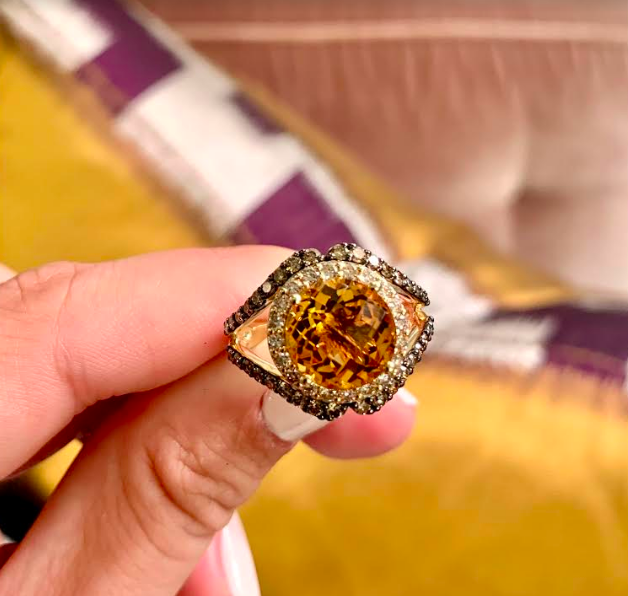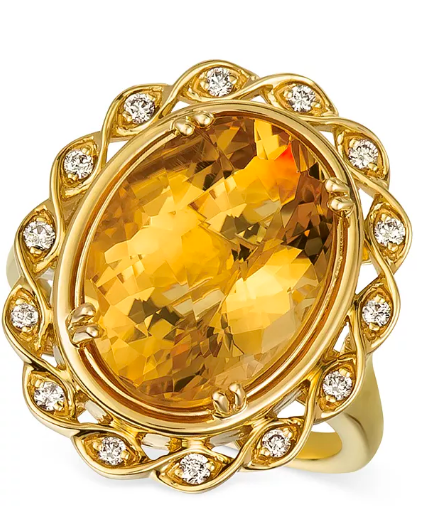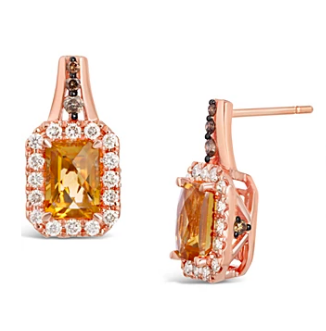Standout November Birthstone: Honey-Hued Citrine
Citrine, a stunning variety of quartz and a staple in some of Le Vian’s most legendary jewelry pieces, is the beautiful November birthstone. Less commonly known than the most prominent precious colored stones like emerald and ruby, this yellow-to-orange gemstone has deep brown or light honey undertones that complement November-born wearers particularly in the autumn months.
To understand this magnificent gem, we can learn a bit more about its unique history. Citrine takes its name from citron, of course due to its color, reminiscent of a citrus fruit. Natural citrine receives its color from traces of hydrous iron oxide found in some quartz crystals. Although most citrine comes from Brazil, this stunning gemstone is also sourced from places like France, Bolivia, India, Madagascar, and even mountainous regions right here in the U.S., like Colorado.


Citrine is quite literally ancient; according to the GIA, various types of quartz were first used thousands of years ago by the Egyptians as ornate talismans and other ornaments. It was sometimes purported that citrine held the power of the sun and ancient peoples are thought to have used the gem in practices to encourage prosperity, heal depression, combat phobias, and even relieve bites of snake venom.


Natural citrine is rare in nature, although today we see it in many antique pieces from the Victorian period and thereafter. Much of the citrine commercially available today is actually heat-treated amethyst, which alters the stone from a deep violet to a more-delicate deep amber hue. Due to their similar honey hues, citrine is sometimes confused with yellow topaz, which is a similar mineral but not related to the quartz family. This charming and sophisticated gemstone is sometimes found under the name Madeira topaz, although it is molecularly distinct from topaz.
One of the most special features of this stone is is the range of colors it may appear in. Some citrines are bright orange, almost-pumkin colored, while others are cinammon-tinted, closer to a true brown. Others, still, are essentially muted yellow or honey in color. No two citrines are exaclty alike, and depending on the stones and metals in the piece they are incorporated in, as well as the light that shines on it, a single citrine can be a chameleon.

According to the Gemmological Association of Great Britain, “Citrine can be found as stand-alone crystals or as a geode containing multiple crystals within a rocky pocket. If sold as an individual crystal, citrine will have a hexagonally shaped prism with a pyramidal termination and slightly thicker base . . . There may be fractures within the crystal that cause iridescence, and the surface may feature striations that run horizontally across the prism faces (if the surfaces have not been polished).” In other words, citrine achieves perfection through imperfection in its surfaces. Citrine is also capable of retaining a high polish during the finishing process, making it even more radiant and eye-catching.

A semiprecious gem, citrine is often compared to its sister stones, amethyst and smoky quartz. Citrine is durable to a degree but indeed a delicate stone, beautiful for special occasion wear and easy to find in larger sizes for statement jewelry like cocktail rings or low-drop earrings. A striking selection of citrine jewelry by Le Vian—for those born in November or for those just looking to make this fall extra-enjoyable!—is available at Kay Jewelers and Macy's locations nationwide.
